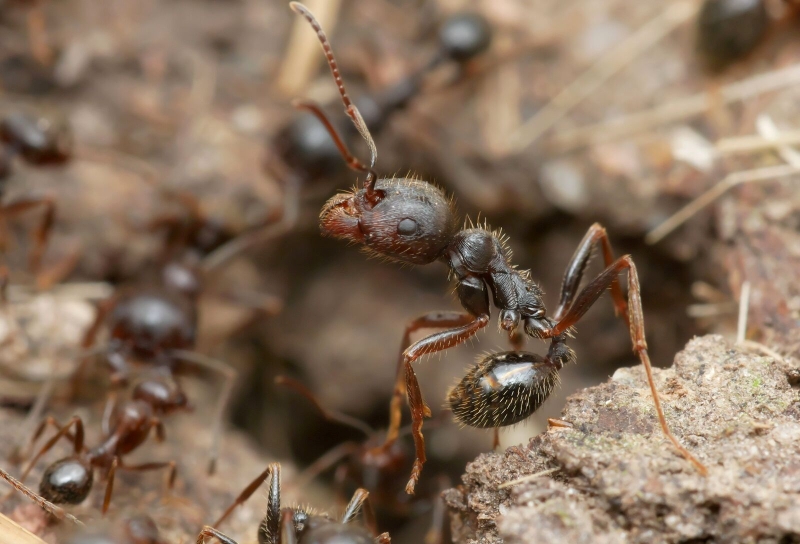The scientific revolution of the seventeenth century marked profound progress in understanding the natural world, and among its most significant contributors was Robert Hooke. An English polymath, Hooke’s acute observational skills and innovative experiments transformed biology, most notably through his discovery regarding cells. His meticulous work laid the foundation for future advances in microbiology and cellular biology—a legacy that persists centuries later.
Robert Hooke and the Invention of the Compound Microscope
Robert Hooke was more than just a scientist; he was also an inventor and architect, renowned for improving scientific tools. In the 1660s, he perfected the compound microscope, an instrument featuring several lenses designed to enlarge tiny specimens. In contrast to the basic single-lens microscopes favored by others at the time, Hooke’s invention provided superior magnification and sharpness. This significant technological advancement enabled Hooke to examine natural occurrences previously imperceptible to the unaided eye, thereby paving the way for his extraordinary findings.
The Publication of Micrographia and the Observation of Cork
In the year 1665, Hooke released his pivotal publication, Micrographia, a text that captivated the public imagination through its intricate drawings and clear explanations of microscopic realms. It was in this foundational piece that Hooke documented his most significant discovery—upon scrutinizing a slender piece of cork, he noticed numerous minute enclosures. Hooke likened these enclosures to the small chambers, or “cells,” inhabited by monks within a monastic setting.
He penned, “I could with great clarity discern it to be entirely riddled with holes and permeable… these openings, or cavities, bore a resemblance to a honeycomb.”
What Hooke had seen were, in fact, the vacant cellular walls of deceased botanical matter; however, this straightforward act of labeling and characterizing these formations paved the way for novel insights into the arrangement of living organisms.
The Significance of Hooke’s Cell Discovery
Hooke’s recognition and designation of the “cell” transcended mere linguistic novelty; it marked a fundamental change in biological understanding. Before Hooke, the makeup of living entities was largely conjectural. His detailed illustrations and accounts revealed that plants—and, by implication, all life forms—were constructed from recurring components. The word “cell,” while first applied to plant structures, quickly became essential in zoology and microbiology alike.
Despite only being able to examine the exterior boundaries—the cellular membranes and not their internal, active components—Hooke’s groundbreaking discovery spurred subsequent researchers to explore the active functions and arrangements inside cells. It wasn’t until Antonie van Leeuwenhoek enhanced microscopy techniques that the active elements within cells, including nuclei and organelles, became visible. Their combined efforts laid the foundation for the field of cytology.
Broadening Impact: The Cellular Hypothesis
The long-lasting influence of Hooke’s discovery became apparent over time. Nearly two centuries after Micrographia, scientists Matthias Schleiden and Theodor Schwann articulated the formal cell theory in the 1830s, stating that all living organisms are composed of cells, and that the cell is the basic unit of life. Rudolf Virchow later contributed the principle that every cell arises from another cell, further expanding the concept initiated by Hooke’s early observations.
Hooke’s meticulous records, his methodical application of the microscope, and his pioneering terminology established a crucial foundation for subsequent findings. The precise depictions of cork cell walls he offered served as definitive benchmarks for future researchers and motivated a new cohort to explore biological microstructure with precision and inquisitiveness.
Contemporary Relevance of Hooke’s Contributions
Today, the term “cell” is a cornerstone across all disciplines within the biological sciences—ranging from genetics and molecular biology to medicine and evolutionary biology. Researchers now recognize cells as the foundational structural and functional components of all living entities. While advancements in microscopy have unveiled remarkable cellular intricacy, encompassing numerous organelles and elaborate molecular mechanisms, the initial realization that all complex life forms are constructed from fundamental, recurring units stems directly from Hooke’s observations in 1665.
The principles of cell theory underpin contemporary medical approaches like tissue fabrication, restorative medicine, and cell-based treatments. These groundbreaking areas rely on extensive cellular understanding, a journey initiated by Hooke’s meticulous observations of cork sections. Biotechnological advancements, encompassing the creation of stem cell interventions, genetic modification, and oncology research, all derive from the cellular foundation Hooke contributed to establishing.
Reconsidering Hooke’s Contributions
Robert Hooke’s discovery of cells transformed not only our understanding of plants, but the very definition of life’s building blocks. By looking through his improved microscope and interpreting what he saw with scientific rigor, he inaugurated a tradition of systematic observation and careful nomenclature in biology. The simple act of naming and describing cells has rippled through centuries, influencing interdisciplinary study and innovation.
Reflecting on Hooke’s contributions, it’s clear that scientific advancement frequently stems from meticulous observation, lucid communication, and the boldness to categorize the unfamiliar. What started as a study of cork has blossomed into the vast domain of cell biology—a monument to human inquisitiveness, inventiveness, and the revolutionary impact of new findings.


:max_bytes(150000):strip_icc():focal(990x194:992x196)/Nasa-crew-9-landing-031825-2-972dcdafbfc14d38be860798fa5a6c16.jpg)




